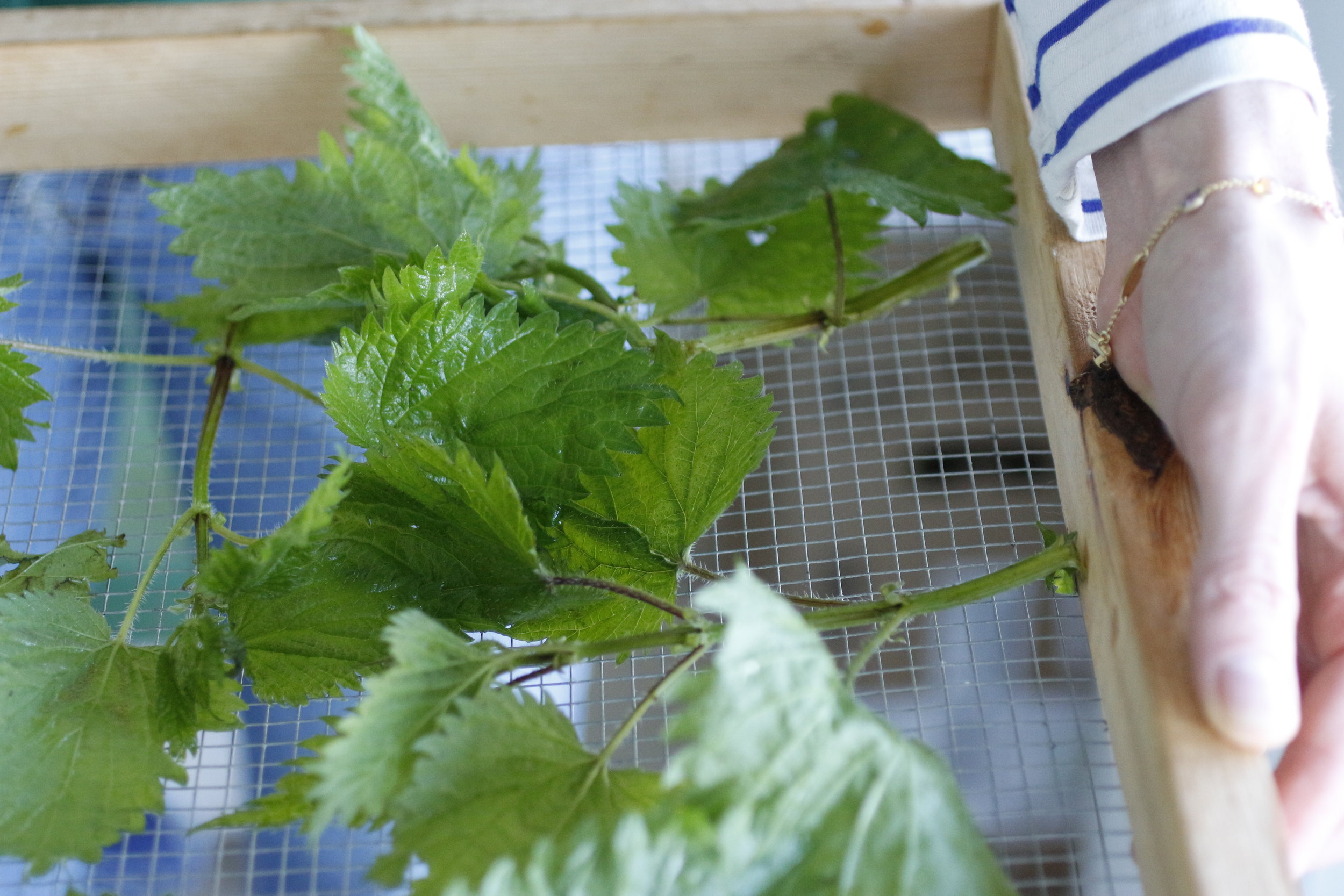Foraging for Nettles
 Stinging Nettles (aka Nettles) are hot hot hot these days. Everyone wants to get their hands on some.Known for their superfood properties (nettles are rich in vitamins A, C, and D and loaded with calcium and even protein), raw nettles will sting you if they come in contact with your skin. The leaves and stem have tiny plant hairs that penetrate your skin and result in welts that sting and burn slightly and are sometimes itchy. Luckily, the welts don’t last for long on most people.
Stinging Nettles (aka Nettles) are hot hot hot these days. Everyone wants to get their hands on some.Known for their superfood properties (nettles are rich in vitamins A, C, and D and loaded with calcium and even protein), raw nettles will sting you if they come in contact with your skin. The leaves and stem have tiny plant hairs that penetrate your skin and result in welts that sting and burn slightly and are sometimes itchy. Luckily, the welts don’t last for long on most people.
Nettles grow along roadsides and pathways, mostly in woods, so keep your eyes open when you’re on any urban nature walks. They come up first thing at the end of winter and are best harvested around March when they are still young, one to two feet high, but I just harvested some new growth at low elevations (like, Seattle!) last week and they were just fine.
The leaves are deeply serrated and end with a pointed tip. They grow in tiers like a Christmas tree—big leaves at the bottom of the plant and smaller leaves toward the tip. Nettles tend to grow in clusters. If you’re not sure you’ve found nettles, a light brush up against a leaf will quickly confirm any suspicions. Nettles are mildly flavored and can be used as a hearty green, a filling for pastas or roulades, or a quick pesto-like pasta sauce. Nutrient-dense nettle leaves may also be used in the garden as an all-purpose fertilizer for your plants—they are thought to pass their beneficial qualities on to other plants.
 To harvest, wear gloves and trim only the top 6" - 12" of the stem and leaves. Clip with scissors and place in a large paper bag. When home, set a large pot over high heat and just cover the bottom with water, about 1" deep. When the water is boiling, toss in the nettles and steam for 10 to 12 minutes. This will remove the sting and leave them ready for eating. I will also often fill a pot with water and blanch nettles for 3 to 4 minutes, reserving the blanching water as nettle tea for drinking.
To harvest, wear gloves and trim only the top 6" - 12" of the stem and leaves. Clip with scissors and place in a large paper bag. When home, set a large pot over high heat and just cover the bottom with water, about 1" deep. When the water is boiling, toss in the nettles and steam for 10 to 12 minutes. This will remove the sting and leave them ready for eating. I will also often fill a pot with water and blanch nettles for 3 to 4 minutes, reserving the blanching water as nettle tea for drinking.
Nettles can be used as you would spinach or sauteed greens in recipes. You can also leave the nettles on their stalks and lay them out on drying racks or hang them upside down to dry. These dried leaves can be steeped as tea, which is thought to be rich in minerals and vitamins.
To make nettle tea for your garden, fill a large jar or jug densely with nettle leaves and cover in water. Let sit out, covered, for a little over a week. During this time, the leaves will start to ferment. The mixture will smell a bit boozy and yeasty. Spray on plants or add a cupful to each container once a week.
